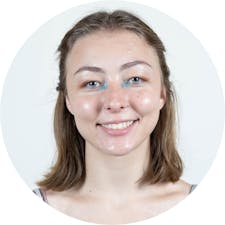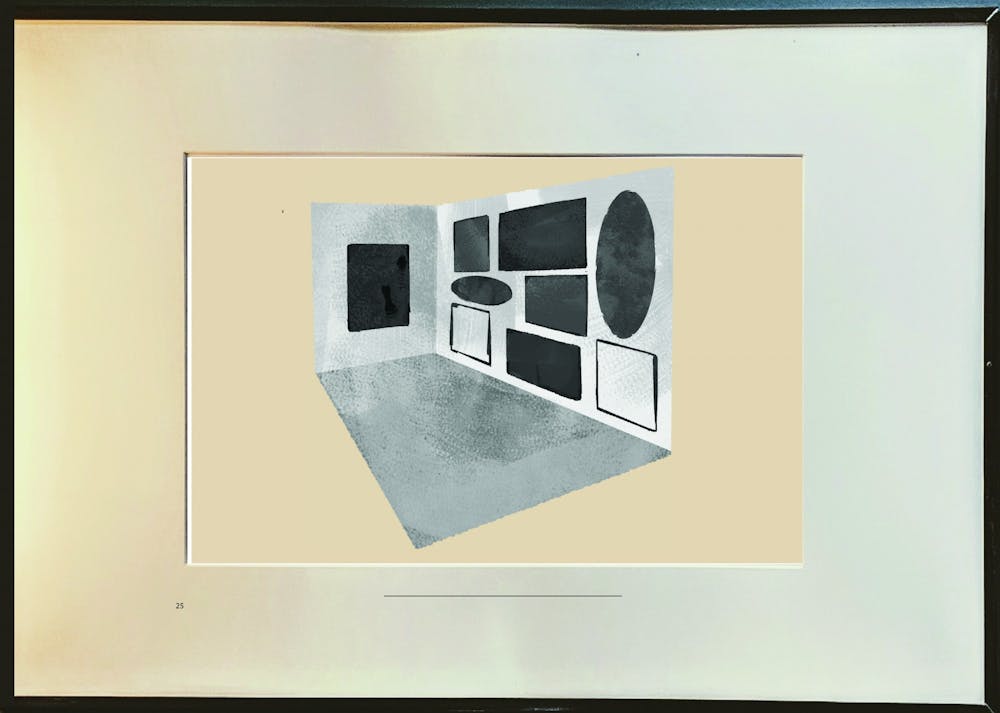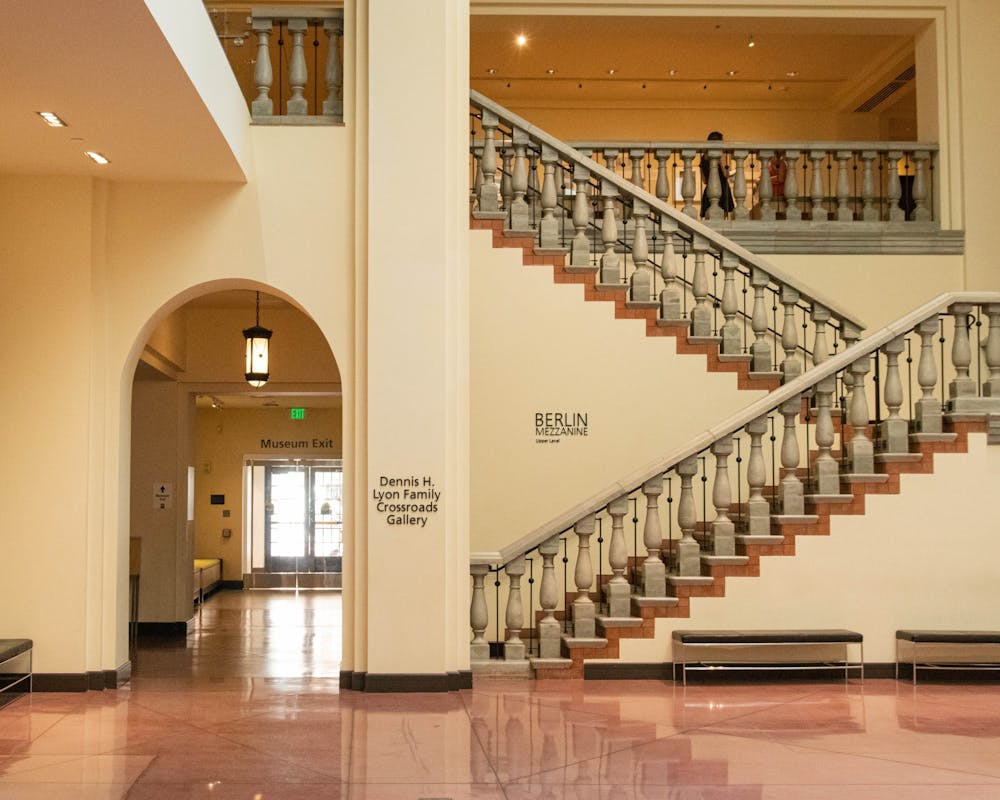This year, the Heard Museum in Phoenix joined the Master’s Fellowship in Art History, a collaborative program between ASU and the Los Angeles County Museum of Art. The three-year fellowship, which started in 2018 and currently has nine fellows, is designed to give people of color working in museums the skills and degrees needed to advance their careers.
Once accepted to the program, ASU-LACMA fellows do not have to pay tuition for their master’s program.
Roshii Montaño, a Diné scholar, started the fellowship this fall. She graduated from Stanford University with a BA in art history in 2020 and currently works as an assistant registrar at the Heard Museum. Founded in 1929, the Heard museum is dedicated to “the advancement of American Indian art.”
Montaño said it can be difficult to find other Indigenous scholars and artists because art history is generally focused on white art and artists. Although it’s only her first semester, she said the fellowship has already managed to break that pattern.
“There’s actually been quite a bit of integration of Indigenous scholarship in the two classes that I’ve taken so far, which has been really cool to experience,” Montaño said.
A 2018 survey of 332 U.S. art museums conducted by Ithaka S+R for the Mellon Foundation found that 72% of all employees in art museums were white. While representation increased in some positions compared to the Mellon Foundation’s 2015 survey, conservation and museum leadership lagged behind. Only 12% of museum leadership were people of color.
According to Montaño, sometimes the solution to increasing diversity in museum staff and leadership boils down to compensating them fairly for their work.
“Fellowships like that are really important, and paid opportunities are really important,” she said. “There’s a lot of museum internships, and I think a lot of those opportunities are really cool, but a lot of the time they’re not paid and that can be really limiting.”
Matthew Miranda graduated from the program in 2021 and currently works as a visual arts curatorial fellow at the Walker Art Center in Minneapolis, Minnesota. He was already working as a freelancer, writing press releases and bios for artists, and working in guest services at the LACMA Store when he applied for the fellowship and became a part of its first cohort in 2018.
During his time in the program from 2018–2021, he worked as a curatorial fellow at the ASU Art Museum. He said the program was exceptional because it enabled fellows to work at museums and study at the same time.
“I was able to work at the same time I was going to school, which is oftentimes the proverbial fork in the road,” Miranda said. “People usually pause their career path and then pursue a graduate degree, or they feel stunted because if they want a promotion or title change, they find [it] requires a higher degree to be competitive.”
The ASU-LACMA fellowship program aims to begin breaking down old, systemic barriers to participation and leadership in American museums. Cecilia Fajardo-Hill, director of the fellowship program, said that won’t happen if it’s left to the same privileged people who didn’t realize or care museums had a diversity problem in the first place.
“We need to have people with profound knowledge of the cultures that have been misrepresented and marginalized,” she said. “This is an absolute must.”
Museums also need to rethink how categories and cultures are displayed at museums and the ways that collections are created, Fajardo-Hill said. Repatriation and dialogue with the communities that exhibits are from are needed as well.
Historically, museum authority has had a narrow perspective on what constitutes art, which devalues and marginalizes art forms from cultures outside of the traditional can- on, she said. Museums must start thinking outside of that biased perspective.
“We need to have many more dialogues, we need to engage with a diverse community and we need to stop being so authoritarian about what we think is the law of art and culture,” she said.
A monopoly on knowledge and collecting is based on privilege, she said, which reproduces colonial structures and upholds white culture above other cultures.
“We need to share the knowledge, we need to share the power, we need to share the resources and diversify,” Fajardo-Hill said.
Education through artwork
A bright blue barber’s chair sits inside a glass box, with long black hair scattered on the floor around it. The sound of frantically snipping scissors faintly pierces the air in an otherwise silent exhibit hall.
Above the glass box, a sign reads:
“The next day the torture began. The first thing they did was cut our hair ... While we were bathing our breechclouts were taken, and we were ordered to put on trousers. We’d lost our hair and we’d lost our clothes; with the two we’d lost our identity as Indians.”
This artwork is part of “Remembering Our Indian School Days: The Boarding School Experience,” an exhibit at the Heard Museum. The exhibit explores how federally run Indian boarding schools separated Indigenous children from their families and forced them to conform to European-American society.
Most of the objects in the Heard Museum are sourced through donations, said Marcus Monenerkit, staff liaison for the American Indian Advisory Committee. The committee is a part of the museum’s effort to engage with the Indigenous communities whose work it displays.
According to Monenerkit, who is of Comanche heritage, the museum usually gets about one or two requests from the Native American Graves Protection and Repatriation Act every year. Established in 1990, the NAGPRA made it a crime to purchase or sell Native American human remains or cultural objects, and established procedures for returning ownership of remains or objects to lineal descendants or an associated tribe or organization.
“We want to be the best partner for this,” Monenerkit said. “We got a lot of skin in the game.”
The Heard Museum’s American Indian Advisory Committee typically handles policy decisions regarding exhibits, events, and programs, as well as drafting the museum’s land acknowledgments.
Some committee members also help select recipients of the Eagle Spirit Award, which honors Indigenous graduate students and their academic achievements from ASU.
Monenerkit is currently working in education outreach at the Heard Museum. In his role as director of community engagement for the museum, he stewards programs that focus on educating a variety of audiences about Indigenous art and culture.
“We really try to connect to local audiences,” he said. “We try to introduce people to the beauty of American Indian art and culture.
“Our message is really about an openness to difference. American Indian culture is grounded in pluralism, so each person has a valid story.”
Hard questions
After protests for racial justice swept the globe in summer 2020, art museums faced increased public pressure to address racial injustices and inequities in their institutions.
A May 2021 survey published by The Art Newspaper asked 22 American museums about the progress they have made toward diversifying their staff, audiences and collections since the police killing of George Floyd in May 2020. Only 13 museums replied. Exhibitions from underrepresented artists were increasing overall in the museums surveyed, and some had added new positions, such as diversity and inclusion directors.
American museums have a long and painful history of displaying art, artifacts and even human bones that were stolen during war and colonial conquests.
In a NAGPRA Notice of Intent to Repatriate from the Heard Museum in 2015, the museum identified a Hochxo Jish that was removed from the Navajo Nation and donated to the Heard Museum in 1979. Hochxo Jish is a type of medicine bundle sacred to the Navajo Nation that is still used ceremonially and requires extensive knowledge within the community to properly utilize.
The notice read that, unless a descendant or tribe not mentioned in the notice makes a claim, the item will be transferred back to the Navajo Nation.
“I think that more and more people are seeing that museums have grown out of colonial structures like imperial collecting and are oftentimes the result of affluent financial families that have amassed personal collections,” Miranda said.
In order to let go of their colonial roots, Fajardo-Hill said museums need to reexamine their own history and see how it led to the present day.
“We need to ask hard questions,” she said. “How do we address this past? What can we rectify? How can we move forward? And how can we stop reproducing the same mistakes?”

Keetra Bippus is a reporter for State Press Magazine and a journalism student at Walter Cronkite School of Journalism and Mass Communication. She's previously reported for AZ Big Media and the Downtown Devil.





